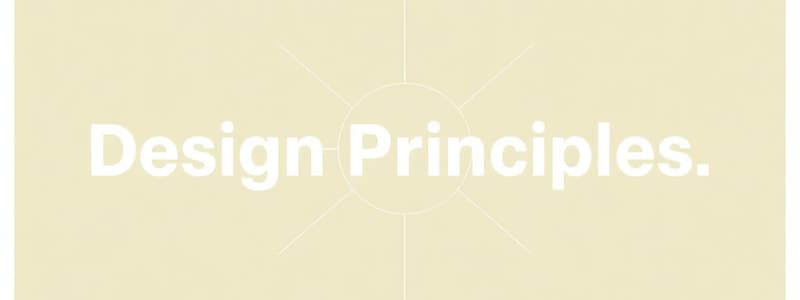Podcast
Questions and Answers
What do the CRAP principles stand for in graphic design?
What do the CRAP principles stand for in graphic design?
- Contrast, reaction, alignment, and placement
- Color, rhythm, aesthetics, and patterns
- Contrast, repetition, alignment, and proximity (correct)
- Creativity, representation, art, and presentation
Why is graphic design important according to the lesson?
Why is graphic design important according to the lesson?
- It serves the purpose of communication. (correct)
- It influences the pricing of products.
- It signifies high-quality materials used.
- It enhances the aesthetic appeal of items.
How does the principle of contrast function in design?
How does the principle of contrast function in design?
- It focuses on the use of colors alone.
- It is a secondary element in design.
- It only applies to textual elements.
- It creates hierarchy by directing viewer attention. (correct)
What feeling or action should a designer aim for when applying the CRAP principles?
What feeling or action should a designer aim for when applying the CRAP principles?
What should one consider when noticing an ad or label regarding its design?
What should one consider when noticing an ad or label regarding its design?
Which principle of CRAP is primarily concerned with the arrangement of elements?
Which principle of CRAP is primarily concerned with the arrangement of elements?
What is the primary purpose of the principle of proximity in design?
What is the primary purpose of the principle of proximity in design?
What outcome is likely when information is scattered throughout a design?
What outcome is likely when information is scattered throughout a design?
What does the effective layout of design elements contribute to?
What does the effective layout of design elements contribute to?
What is the recommended alignment for larger bodies of text?
What is the recommended alignment for larger bodies of text?
What alignment option is often overused by beginning designers?
What alignment option is often overused by beginning designers?
Which principle emphasizes the importance of consistency across design elements?
Which principle emphasizes the importance of consistency across design elements?
In which scenario is center alignment most effective?
In which scenario is center alignment most effective?
What does justified alignment do to the text?
What does justified alignment do to the text?
What is a key benefit of having organized designs?
What is a key benefit of having organized designs?
What does the purpose of contrast achieve within a design?
What does the purpose of contrast achieve within a design?
What aligns with the principle of hierarchy in design?
What aligns with the principle of hierarchy in design?
Which alignment option is considered the most legible for readability?
Which alignment option is considered the most legible for readability?
What is justified alignment often referred to in design?
What is justified alignment often referred to in design?
What should a designer consider before beginning a multi-page project?
What should a designer consider before beginning a multi-page project?
In relation to graphic design, what does the principle of alignment primarily aim to achieve?
In relation to graphic design, what does the principle of alignment primarily aim to achieve?
Which design principle is essential for creating a polished look in graphic design?
Which design principle is essential for creating a polished look in graphic design?
Flashcards are hidden until you start studying
Study Notes
C.R.A.P. principles of graphic design
- The C.R.A.P. principles of graphic design consist of Contrast, Repetition, Alignment, and Proximity.
- These principles guide designers in creating effective and visually appealing designs.
- They unlock design expertise and help distinguish high-quality graphic design from "crap."
Contrast
- Contrast is used to direct the viewer's attention by creating a hierarchy within the design.
- Contrast can be achieved using elements such as size, shape, color, font, and white space.
- Small differences in contrast may not be noticeable, while excessive contrast can create chaos.
Repetition
- Repetition establishes a brand, look, style, and feel for a design.
- It creates unity and cohesion across multiple pages or elements within a single design.
- Repetitive elements can include color schemes, shapes, patterns, lines, fonts, borders, and more.
Alignment
- Alignment ensures that every element in a design has a visual anchor, avoiding a floating look.
- The four main alignment options are left, right, center, and justified.
- Left alignment is considered the most legible for text, center alignment is suitable for headlines and limited text, right alignment can create visual interest, and justified alignment is used for columns in books and magazines.
Proximity
- Proximity organizes and groups elements in a design to guide the viewer's understanding.
- It prevents the viewer from having to search for information.
- Proximity can be achieved through layering, borders, boxes, banners, lines, and shapes.
Summary
- The C.R.A.P. principles provide a framework for creating clear and effective graphic designs.
- By understanding and applying these principles, designers can create designs that communicate effectively and leave a lasting impression on viewers.
Studying That Suits You
Use AI to generate personalized quizzes and flashcards to suit your learning preferences.




